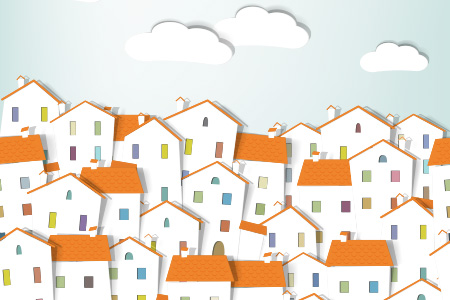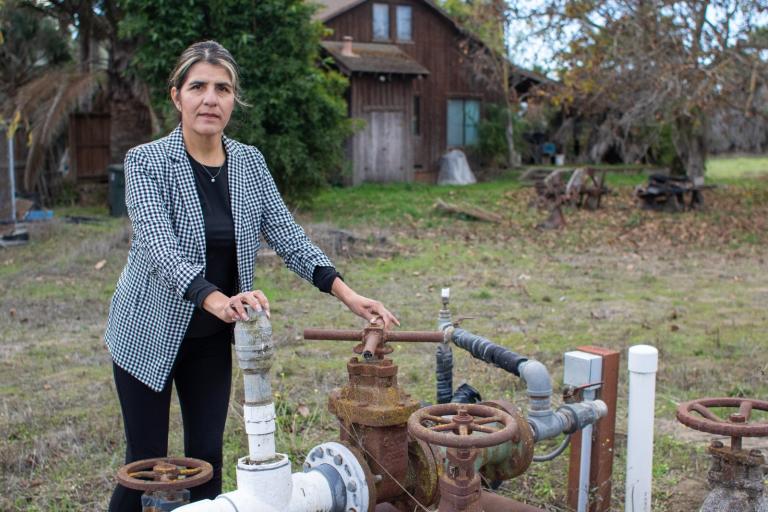
Image by Dzm1try / Shutterstock.
I just finished 11 months of barely paid work as an AmeriCorps member with the Oakland, Calif.-affiliate of Rebuilding Together — a nonprofit service organization that, when I describe it to people, invariably elicits the reply: “Oh, it’s just like Habitat for Humanity.”
Well, yes — and not so much …
See, this wasn’t my first stint working on low-income housing. Six years ago, I worked as an AmeriCorps member with Habitat for Humanity. My days were devoted to everything from setting rebar and pouring concrete to nailing shingles on rooftops. We built houses from the ground up, leading teams in sunshine and in fog to turn bare patches of land into mini-developments for low-income homeowners.
Rebuilding Together is a little different. Founded in 1973 as Christmas in April and renamed a decade ago to reflect its year-round, secular programming, it renovates and repairs existing structures for low-income homeowners. My work with Rebuilding Together was harder to spot than Habitat’s, and took less time to execute, but in many ways I suspect I made a more lasting impact, while taking less of a toll on the planet — and therein lies an important lesson for everyone who works on housing for those in need.
I had a great time working with Habitat: I worked with tremendous people and learned a ton, much of which proved useful with Rebuilding Together. But the difference between building a new house and rehabbing an occupied one is like the difference between opening a cadaver and working on a real-live patient — whether you’re poking at a person or an old house, there’s a need for diagnostic skill and interpersonal ability that the opposite condition doesn’t require.
Beyond the requisite skill level lie the environmental and social impacts of each strategy. New building is more resource-intensive than renovation. And while, in the Bay Area, Habitat focuses on infill rather than sprawl, that’s not the case elsewhere. (In fact, Habitat affiliates in Colorado and Arizona have actively fought anti-sprawl ballot measures, arguing that land-use restrictions raise housing costs.)
In addition to a smaller ecological footprint, Rebuilding Together’s efforts have the added benefit of neighborhood stabilization — and I’m not using that term as a euphemism for gentrification. In fact, Rebuilding Together serves as a bulwark against real-estate speculators and home-flippers.
One of the homes I worked on this April was a beautiful West Oakland Victorian, built in the 1870s. The neighborhood around it has been gentrifying rapidly in the past few years — several of the neighbors we met were right out of an Anthropologie catalog — but our particular homeowner, a sweet and elderly black woman, had lived there since the 1950s. The Rebuilding Together team stripped lead paint (and repainted), installed new flooring, repaired old wiring, and rebuilt a dangerous and crumbling back deck. The homeowner, her children, and her grandchildren can continue to live safely in their house for years to come.
If Rebuilding Together does such great work, though, why have most people never heard of it? Well, it turns out that Habitat is kind of an insane juggernaut in the world of nonprofit housing services, with money and resources that others can only dream of. (It also has Jimmy Carter.) Plus, it’s easier to work on a house where nobody lives yet — and “We put families in new homes!” has a certain marketing sex appeal that “We prevent houses from falling down on old ladies!” just can’t match.
But as you probably know, there are a lot of empty houses out there these days, and it’s become harder for Habitat justify new construction. Recently, Habitat has quietly shifted its strategy to become more home-flipper than home-builder. Although the group still does some new construction, there’s been a decided movement toward renovating and reselling foreclosed properties to low-income buyers.
Habitat has also just initiated a new program called A Brush With Kindness that imitates the Rebuilding Together model, but the standards vary wildly from affiliate to affiliate. In Miami, for example, the only services offered are landscaping and exterior painting. Habitat Northern Virginia includes painting, wheelchair ramps, roofing, fencing, siding, and weatherization — but all are focused on external repairs, leaving critical gaps inside the homes.
The good news is that Habitat and Rebuilding Together are starting to team up. This year I was involved in the launch of a pilot partnership between Rebuilding Together Oakland and Habitat for Humanity East Bay, in which RTO coordinated homeowner relations while Habitat completed five major exterior projects including roofing, ramps, and stairs — projects that cash-strapped Rebuilding Together lacked the resources to carry out. Next year, Rebuilding Together Oakland hopes to expand the partnership, beginning a truly sustainable collaboration that plays to the strengths of both organizations.
It is remarkable how much hidden poverty surrounds us in America, particularly among the elderly, and although the client population I served at Rebuilding Together doesn’t seem particularly poor by some metrics — after all, they are all homeowners in the pricey Bay Area — a simple glance inside many of their homes belied such a belief. There are people in major cities in 21st-century America living without electricity, hot water, and ovens or stoves, with holes in the floors, walls, and roofs. These people are not homeless, nor looking for a new home; often they have worked their entire lives to pay off their mortgage and now, elderly, they are incapable of maintaining the place independently.
My fingers are crossed that Habitat’s entry into the home-repair sector will lead to more funding opportunities to address this silent crisis. Maintaining our existing housing stock — whether on a nonprofit or a for-profit level — requires a radical shift in strategy from the traditional American ideology of building new. The long-range impacts of new construction on climate change and land use cannot be ignored; neither can the homeowners who need our help immediately.



